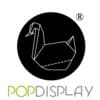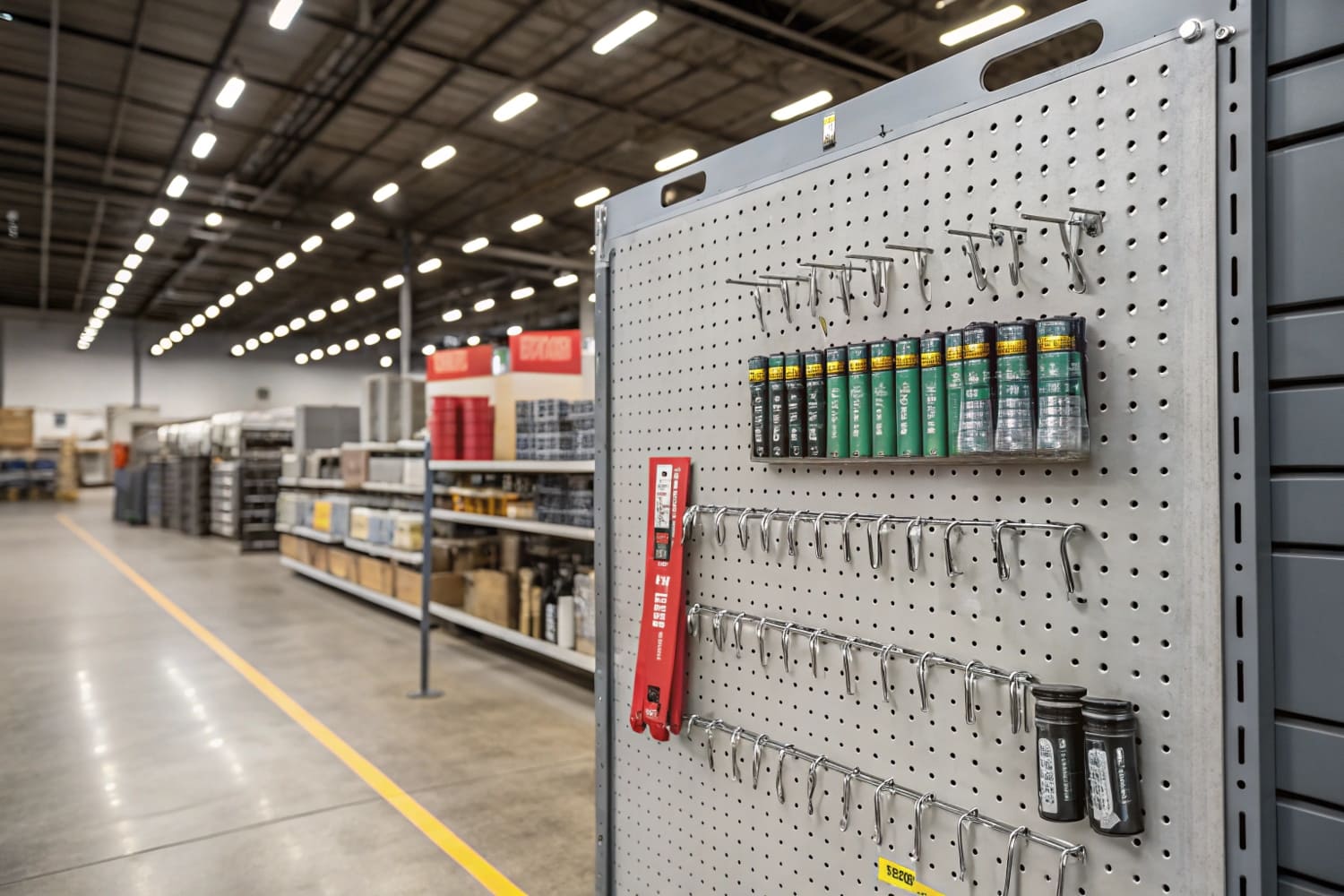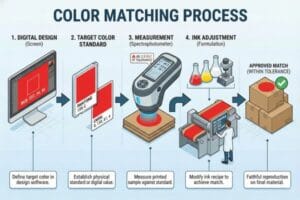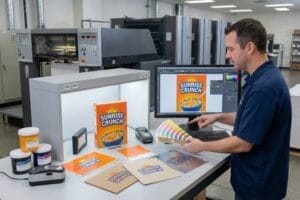I work with retail displays every day. Speed matters. Shoppers decide fast. If the board, hooks, and graphics do not match the product, sales slip and inventory moves slower.
The main merchandising peg boards are perforated hardboard (MDF/HDF), steel pegboard, plastic pegboard (PP/ABS/HDPE), wire grid used with peg hooks, and corrugated cardboard peg panels for short campaigns. Each type suits a different load, budget, and lifespan.
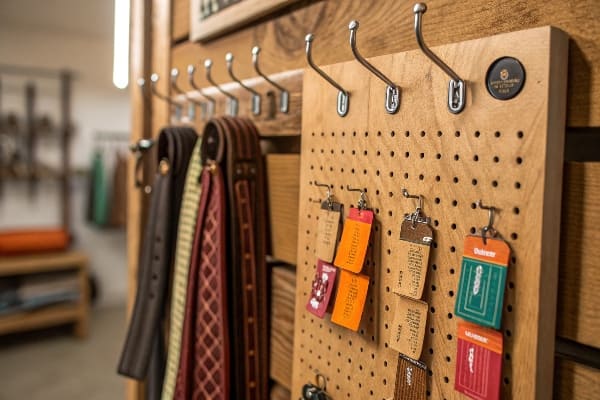
I run a cardboard display factory in Shenzhen, and I export to the US, Canada, the UK, and Australia. I see what survives store floors and what fails in transit. I will keep this simple and practical.
What are the different types of peg board?
You may face a wall of choices. You want a clear map. I will list types, then show how to pick fast with simple rules.
Peg boards include hardboard/MDF panels, steel panels, plastic panels, wire grid with peg hooks, and corrugated cardboard peg panels. Choose by load, humidity, budget, install time, and campaign length.
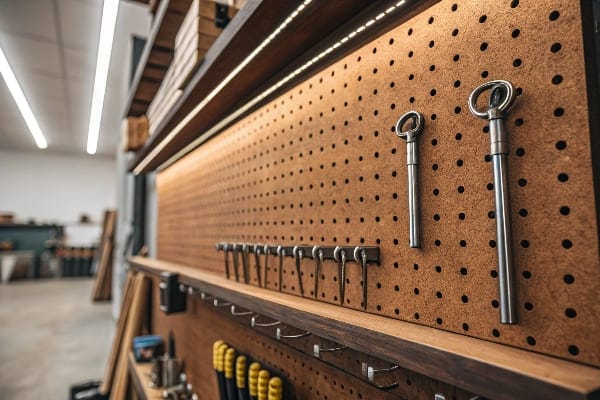
Materials at a glance
I group the field into five buckets that I use in real orders. Hardboard is cheap and common, but it hates moisture. Steel is strong and stable, but heavier and costlier. Plastic sits in the middle, with good moisture resistance and clean edges. Wire grid is not a “board,” but it takes peg hooks and moves fast for pop-up use. Corrugated cardboard peg panels look light, yet they win for limited-time promotions because they ship flat, print well, and install in minutes. I advise buyers to sort first by campaign length, then by load per hook, then by humidity. This stops indecision. Here is a one-screen summary I share with new clients before we talk planograms.
| Type | Typical Load | Moisture Resistance1 | Branding | Cost | Best Use |
|---|---|---|---|---|---|
| Hardboard (MDF/HDF) | Low–Medium | Low | Decals only | $ | Everyday light goods |
| Steel Pegboard | Medium–High | High | Magnets/plates | $$$ | Tools, heavy packs |
| Plastic Pegboard (PP/ABS/HDPE) | Medium | Medium–High | Labels, inserts | $$ | Pharmacies, humid sites |
| Wire Grid + Peg Hooks | Medium–High | High | Clip-on signs | $$ | Pop-up, flexible walls |
| Corrugated Cardboard Peg Panel | Low–Medium | Medium | Full-print | $ | Seasonal, PDQ promos |
Selection checklist
Set your board by five quick inputs: product weight per hook, SKU density per bay, humidity in-store, install crew time, and campaign window. If you want 6–8 weeks and bold print, corrugated wins. If you want five years and strong hooks, steel wins. If you need a balanced middle, plastic works.
What is better than a peg board?
You might think a peg board is default. It is not. Some fixtures beat peg boards in key cases like heavy goods or dense assortments.
Slatwall, gridwall, custom corrugated hook displays, and gondola shelves can be better than peg boards when you need higher load, faster resets, richer branding, or more SKU density per bay. Fit the tool to the job, not the habit.
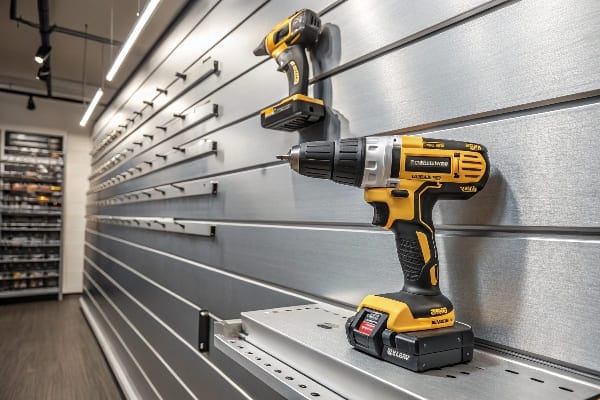
When alternatives win
I switched a hunting accessories launch from pegboard to slatwall last fall. The buyer wanted heavy items, wide headers, and fast resets. Peg hooks swayed and labels drifted. Slatwall2 gave rigid brackets and tidy shelves for mixed packs, with hooks only where needed. For seasonal endcaps, I often pitch a corrugated hook display. It arrives flat, prints full-bleed, and goes live in under 15 minutes with simple tabs. It then recycles after the campaign. Gridwall3 also shines for roadshows because it folds, rolls, and reconfigures on-site. The right answer depends on load, mobility, and how loudly you want the brand to speak on the unit itself.
| Alternative | When It Is Better | Why | Trade-off |
|---|---|---|---|
| Slatwall | Heavy SKUs, mixed fixtures | Shelves + brackets + hooks | Higher fixture cost |
| Gridwall | Mobile or temporary | Fast reconfig, durable | Industrial look |
| Corrugated Hook Display | Short promos, big branding | Full-print, flat-pack | Lower load |
| Gondola Shelving | High facings, cartons | Stable shelves | Less vertical peg capacity |
What is the best material for a peg board?
You want one winner. There is not one. The best material depends on weight, moisture, budget, and branding needs.
Steel is best for heavy and long-term use. Plastic is best for clean retail and moderate loads. Hardboard wins on cost for dry stores. Corrugated peg panels are best for short, printed promotions that must ship flat and set up fast.
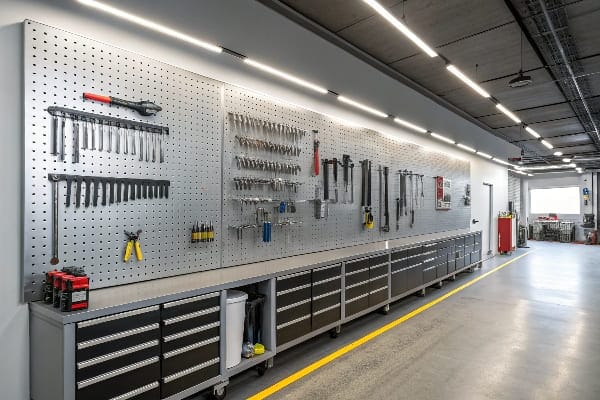
Scorecard by use case
I set a simple score from 1 to 5 across common needs. Steel tops load and lifespan. Plastic leads in clean edges and moisture resistance without the weight of steel. Hardboard gives the lowest material cost and easy cutting, but it swells in damp backrooms. Corrugated peg panels add campaign value because artwork covers the whole face, and the logistics bill stays low. In pharmacy remodels, plastic often wins. In hardware, steel usually wins. In seasonal grocery islands, corrugated wins, then clears out after the promo. This prevents fixture clutter and lowers labor at reset.
| Material | Load | Moisture | Branding Area | Install Speed | Cost |
|---|---|---|---|---|---|
| Steel | 5 | 5 | 3 | 3 | 3 |
| Plastic (PP/ABS/HDPE)4 | 4 | 4 | 3 | 4 | 4 |
| Hardboard (MDF/HDF) | 3 | 2 | 2 | 4 | 5 |
| Corrugated Peg Panel5 | 3 | 3 | 5 | 5 | 5 |
My rule of thumb
If the campaign runs under 12 weeks and needs bold print, I choose corrugated. If the planogram is stable for years and loads are high, I choose steel. If the area is clean retail with moderate weight, I choose plastic. If the budget is tight and the store is dry, I choose hardboard.
What is the disadvantage of pegboard?
Every system has limits. Pegboard is simple, but it brings small pains that grow on busy floors.
Pegboard can sway hooks, limit branding, gather dust in holes, and struggle with humidity if it is hardboard. Heavy items need reinforcement. Planogram changes can leave extra holes and visual noise.

Risks and fixes I use in the field
I see three common issues. First, hook sway6 and label creep. I fix this with locking hooks, backer strips, or shelf lips for mixed items. Second, brand impact is low on bare boards. I add printed backer cards, header signs, or switch to corrugated peg panels when brand blocking matters. Third, moisture kills hardboard. I move to plastic or steel near doors and stockrooms. I also guard against safety problems from long hook protrusions by using shorter hooks or tip covers in high-traffic lanes. Finally, holes invite dust. I schedule fast wipe-downs during resets. A planogram discipline helps too. It keeps every hole purposeful, so the wall looks clean and sells clean.
| Issue | Impact | Simple Fix | Upgrade Path |
|---|---|---|---|
| Hook sway | Messy facings | Locking hooks | Slatwall brackets |
| Low branding | Weak recall | Backer cards | Corrugated peg panel |
| Humidity warp | Premature failure | Move location | Plastic/steel board |
| Dust in holes | Dirty look | Wipe during reset | Graphic backers |
| Protruding hooks | Safety risk | Shorter hooks/caps | Shelves + hooks mix |
Does Walmart sell pegboards?
You want a quick answer for sourcing or a test build. I will answer straight, then add buying tips.
Yes, Walmart sells pegboards and accessories in many stores and online. You can find small panels, kits, hooks, bins, and mounting hardware. Stock varies by location and season, so check local availability first.
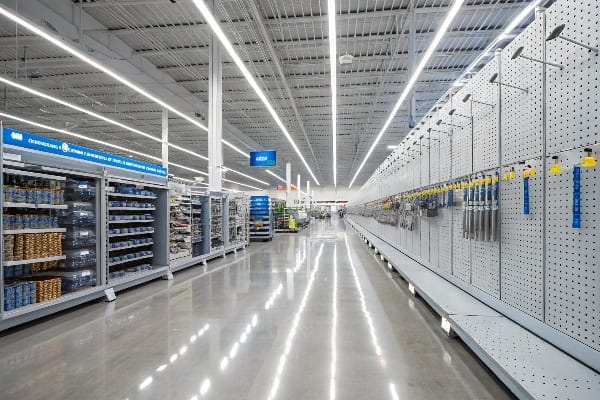
How I buy and spec for big-box practicality
For small quantities or mockups, I point engineers to the hardware or home organization aisle, or to the online store for panel kits and hook assortments. These are fine for pilot bays and sample walls. For national programs, I avoid retail kits. I order fixture-grade panels7 from approved shopfitters and use Walmart-compliant gondola specs when needed. I pack corrugated hook displays8 as PDQ units that drop into a 48-inch bay, with clear planogram labels, EAN/UPC, and color-consistent print. I use water-based inks and FSC paper when possible because buyers ask for it. I plan transit tests for hooks and base trays because small failures multiply at scale. This reduces returns and keeps launch dates safe.
| Need | Action | Why It Helps |
|---|---|---|
| Quick prototype | Buy retail kit | Fast, low commitment |
| Store test | Fixture-grade panels | Accurate performance |
| Seasonal promo | Corrugated hook display | Bold branding, flat-pack |
| Heavy SKUs | Steel board + brackets | Safety and lifespan |
| Compliance | Planogram labels + PDQ | Faster store setup |
Conclusion
Peg boards work when I match material, load, and campaign length. I choose steel for heavy, plastic for clean retail, hardboard for low cost, and corrugated for fast, branded promotions.
Understanding moisture resistance can help you choose the right materials for your display needs, ensuring durability and effectiveness. ↩
Explore the benefits of Slatwall for retail displays, including its versatility and organization for heavy items. ↩
Learn how Gridwall enhances mobile retail setups with its reconfigurable design and durability. ↩
Discover why plastic materials are favored for their moisture resistance and clean edges in retail environments. ↩
Explore the advantages of corrugated peg panels for effective branding and cost-efficient logistics in retail settings. ↩
Explore this link to discover innovative solutions for hook sway, ensuring your retail displays remain organized and visually appealing. ↩
Understanding fixture-grade panels can enhance your retail strategy, ensuring durability and compliance. ↩
Explore how corrugated hook displays can elevate your branding and streamline product presentation. ↩
